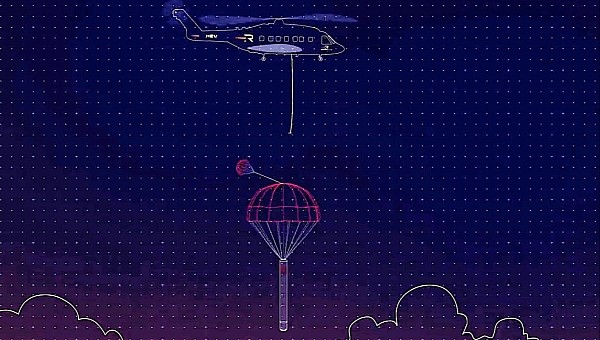Of all the weird things we were expecting to come our way from the space exploration industry, catching a rocket booster mid-air by means of a helicopter is certainly one of the weirdest. And yet, someone has done it once, and they’ll do it again.
Back in May, we learned of a space company called Rocket Lab using a Sikorsky S-92 helicopter to catch the booster of an Electron rocket as it descended after launch. The mission, called There And Back Again, was as strange as they get, but only a taste of more such things to come.
On November 4, another Rocket Lab Electron Rocket will lift off again, carrying to space a Swedish satellite called Mesospheric Airglow/Aerosol Tomography and Spectroscopy (MATS), meant to study our planet’s atmosphere.
The rocket’s reusable booster will fall to the ground after that, and just like in May, the same helicopter will fly out and meet it over the waters near the New Zealand Banks Peninsula.
Now, we all know returning boosters are fast, some 5,157 mph (8,300 kph) fast. To slow down to a more manageable 22 mph (36 kph), it uses a parachute system, and it is this system the Sikorsky will use to grab it in the air.
To do that, the helicopter’s pilot will have to climb above the booster’s position, match its descent speed, and use a hook to catch the parachute line.
Now, all that sounds awfully complicated as it requires a lot of coordination, but an animation video released by Rocket Lab shows just how easy it could all be with the right people in place.
You can enjoy all the animated action in the tweet attached below. The real deal will be made public after the mission, called Catch Me If You Can, on November 4.
On November 4, another Rocket Lab Electron Rocket will lift off again, carrying to space a Swedish satellite called Mesospheric Airglow/Aerosol Tomography and Spectroscopy (MATS), meant to study our planet’s atmosphere.
The rocket’s reusable booster will fall to the ground after that, and just like in May, the same helicopter will fly out and meet it over the waters near the New Zealand Banks Peninsula.
Now, we all know returning boosters are fast, some 5,157 mph (8,300 kph) fast. To slow down to a more manageable 22 mph (36 kph), it uses a parachute system, and it is this system the Sikorsky will use to grab it in the air.
To do that, the helicopter’s pilot will have to climb above the booster’s position, match its descent speed, and use a hook to catch the parachute line.
Now, all that sounds awfully complicated as it requires a lot of coordination, but an animation video released by Rocket Lab shows just how easy it could all be with the right people in place.
You can enjoy all the animated action in the tweet attached below. The real deal will be made public after the mission, called Catch Me If You Can, on November 4.
Catch Me If You Can? Challenge accepted. In two days' time, here's how we'll attempt to catch Electron with a helicopter as the rocket returns from space.
— Rocket Lab (@RocketLab) November 2, 2022
More mission info: https://t.co/Uc9nTRitaa pic.twitter.com/XgPRl5x7r2












